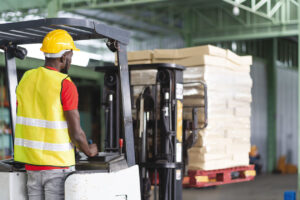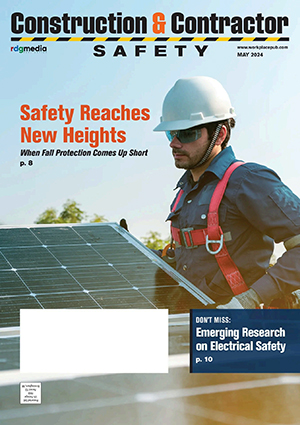The Evolution of High Visibility Workwear
High vis gear spans a growing range of applications and environments.
By: Shana McGuinn, Contributor
High visibility apparel is showing up seemingly everywhere these days. Workers in the construction, waste collection, warehouse, manufacturing, oil and gas and other industries wear it, as do security guards, first responders, railway workers, school crossing guards and parking lot attendants.
Brightly colored vests and reflective outwear aren’t only found in workplaces; they are also popular among recreational users. They allow hunters to avoid accidental shootings, and enable motorists to see pedestrians, bicyclists and runners in less-than-ideal light conditions, such as at dusk or dawn – or even at night.
It’s hard to think of a time when high vis options weren’t readily available. While reflective materials and fluorescent pigments are relatively recent technology, the concept of dressing in a way that enhances visibility at work is not new. High visibility gear and personal protective equipment (PPE) have been evolving since the beginning of the industrial revolution.
Reflective material
The quest to create reflective material actually emerged from a desire to improve visibility on the nation’s roadways. In the early part of the 20th century, lane divisions were indicated with white or yellow paint, which could not be easily seen at night. According to 3M, the discovery of luminescent glass beads by Harry Heltzer laid the groundwork for reflective material in 1938, and eventually paved his way to the 3M C-suite.
In 1937, Heltzer was assigned to a project team trying to develop reflective road striping that could withstand brutal Minnesota winters. He began by pouring molten glass from a sixth-floor window to create glass beads, and adhered the reflective particles to double sided tape. Although his method was unorthodox, his findings led to the development of reflective road signs and weather-resistant traffic tape.
While initially credited with improving night vision on roadways, reflective tape and materials have revolutionized high vis workwear, and a wide range of reflective commercial goods. Today, reflective material is even making its mark as a stylish addition to athletic brands, streetwear and luxury fashion.
Fluorescent pigments
Heltzer wasn’t the only person working on the visibility problem in the 1930s. While recovering from – ironically – a workplace eye injury, Bob Switzer and his brother Joe created the first black light fluorescent paint by mixing wood varnish with minerals. Marketed today as Day-Glo and Magnaflux, the use of fluorescent dyes, paints and penetrants took a big leap forward during World War II.
The U.S. military experimented with and adopted them for a number of strategic uses. For example, fluorescent materials were used to show pilots where to land, and were used on buoys indicating mine fields that had been cleared and were safe to traverse. It took another 30 years for high vis clothing to gain traction. As an experiment in 1964, the Scottish Region of British Railways issued fluorescent orange jackets to its track workers. Once the early trials were deemed successful, the jackets were provided to other classifications of railway staffers throughout Scotland and England.

Wearing high visibility workwear helps protect workers from being injured in struck-by incidents. © amorn – stock.adobe.com
High vis workwear
High vis workwear subsequently expanded to many other industries, a development fueled, in part, by the American National Standards Institute (ANSI) requiring reflective tape for high-visibility clothing in the workplace in the 1960s. In 1999, ANSI/ISEA published standard 107 for high-visibility clothing, which specified performance requirements like colors, retroreflection, and the recommended configuration of the materials.
ISO 20471, an International Organization for Standardization technical standard published in 2013, also addresses performance requirements for high vis clothing. Both standards have been updated several times, to address emerging testing technology and new materials. For example, the ANSI/ISEA-2020 revision added language that allows manufacturers to test garments for luminance per ASTM E1501 specifications for nighttime photometric performance of retroreflective markings for visibility enhancement.
What’s next?
Manufacturers have continued to innovate in the high vis space, rolling out new colors and photo-luminescent strips. For example, micro-prismatic tape whose prisms reflect light back to its source and fluorescent materials are now suitable for daytime use, because they need some visible light in order to provide a visual contrast to a background. Material made from glass beads remains in widespread use due to its affordability and ability to reflect light from a wide angle.
Today, high vis workwear takes many forms, including vests, jackets, hardhats, gloves and pants. It is available in lightweight garments for workers who must toil in hot conditions – either indoors or out – and in insulated clothing for those exposed to cold temperatures.
Waterproof high vis outerwear keeps workers dry and comfortable in rainy conditions. Flame retardant versions offer protection against flames – while also maintaining a high degree of visibility. In sum, there are high vis solutions for a broad range of workplace applications and environments, and there will likely be even more developed in the future. WMHS
Shana McGuinn is a freelance writer who writes about occupational safety, environmental issues and health and wellness.




